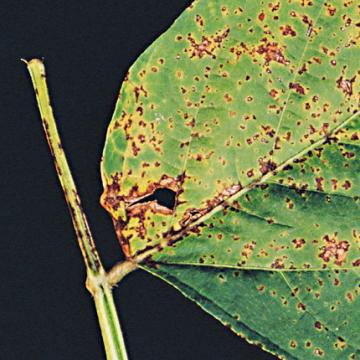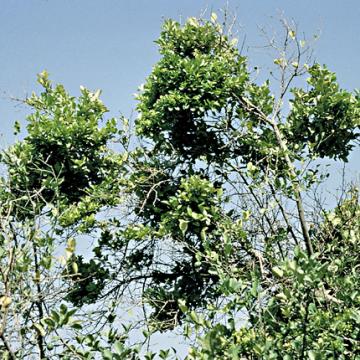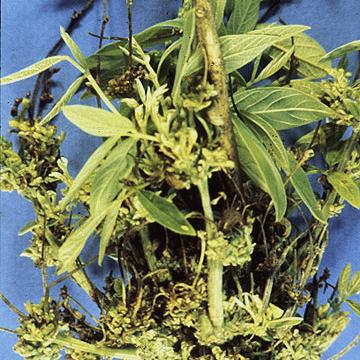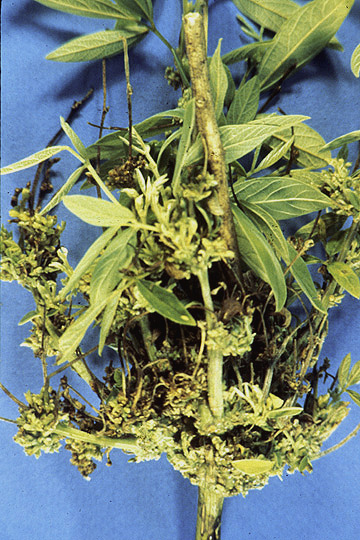DISEASE: Bacterial pustule
HOST: Soybean
Early symptoms are minute, pale green spots on young leaves. Later, small pustules form in the center of spots, best observed on underside of leaves. Spots vary in size and darken with age and lesions coalesce. Dead areas are torn away by wind.
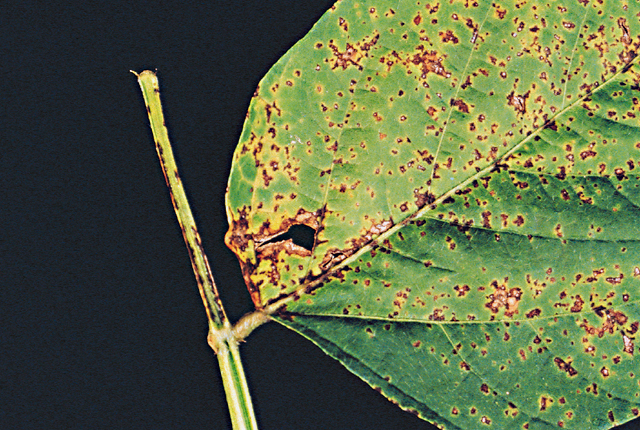
Bacterial pustule | Soybean
DISEASE: Bacterial pustule
HOST: Soybean (Glycine max)
PATHOGEN: Xanthomonas axonopodis pv. glycines
PATHOGEN SYNONYM: Xanthomonas campestris pv. glycines
SOURCE: APS
DISEASE: Rugose leaf curl
HOST: Clover
Two rugose, distorted white clover leaves and a healthy leaf. Rugose leaf curl is caused by an unidentified phloem-infecting bacterium.
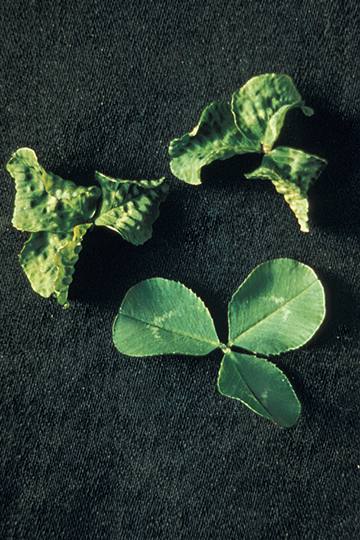
Rugose leaf curl | Clover
DISEASE: Rugose leaf curl
HOST: Clover (Trifolium repens)
PATHOGEN: Phloem-infecting bacterium
SOURCE: D. Teakle
DISEASE: Sweet potato little leaf
HOST: Sweet potato
Infected plant (left) and healthy plant (right).
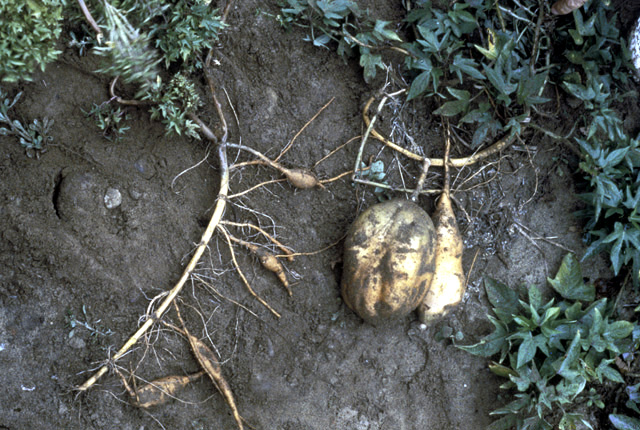
Sweet potato little leaf | Sweet potato
DISEASE: Sweet potato little leaf
HOST: Sweet potato (Ipomoea batatas)
PATHOGEN: 'Candidatus Phytoplasma aurantifolia'
PATHOGEN SYNONYM: Phytoplasma Peanut witches'-broom group
SOURCE: R. McCoy, M. Davis
DISEASE: Witches'-broom
HOST: Citrus (Lime)
Lime tree with compact, small leaves (witches'-broom). Leaves on older brooms dry out and eventually drop, leaving dead, bare branches. There are no flowers or fruit on brooms.
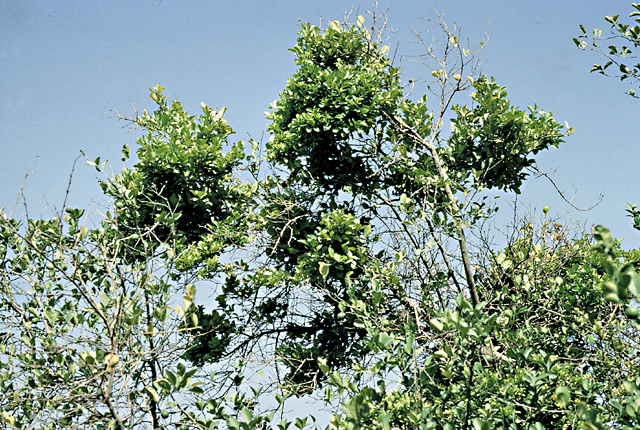
Witches'-broom | Citrus (Lime)
DISEASE: Witches'-broom
HOST: Citrus (Lime) (Citrus sp.)
PATHOGEN: 'Candidatus Phytoplasma aurantifolia'
PATHOGEN SYNONYM: Phytoplasma Peanut witches'-broom group
SOURCE: J. Bove, M. Garnier


